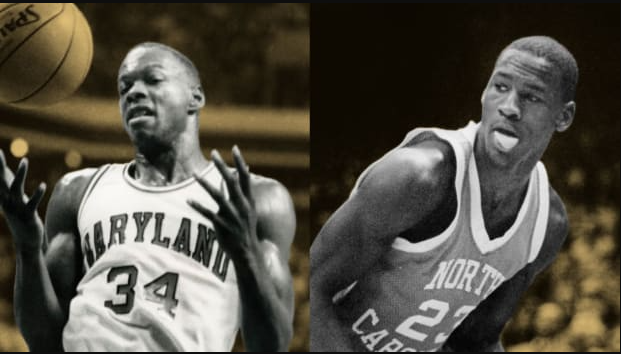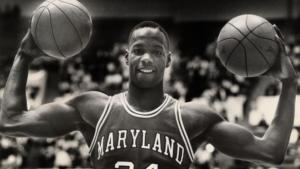
The Lasting Effects of Len Bias and Jordan McNair on Maryland’s Future
The University of Maryland has faced two significant tragedies in its athletic history that have left indelible marks on its policies, culture, and the broader conversation about athlete safety and well-being. The deaths of Len Bias in 1986 and Jordan McNair in 2018 occurred in vastly different contexts, yet both incidents raised crucial questions about how universities prioritize the lives of their student-athletes. These tragedies have fundamentally shaped the future of the university, spurring investigations, policy reforms, and a renewed focus on athlete health and safety.
Len Bias, a rising star in collegiate basketball, was selected as the second overall pick in the 1986 NBA Draft by the Boston Celtics. The euphoria surrounding his selection quickly turned to horror when he died two days later from a cocaine overdose. Bias was not only a talented athlete but also a symbol of hope for the university. His death prompted immediate scrutiny of not just his personal choices, but also the environment at the University of Maryland that may have contributed to his tragic demise.
In response to Bias’s death, the university established two task forces: one to investigate academic performance within athletics and another to examine drug use on campus. Robert Dorfman, who chaired the task force focused on academics, highlighted the profound unease that permeated the university in the wake of Bias’s death. “If I were a university president, I wouldn’t be able to sleep at night,” he remarked, indicating the deep-seated concerns about the welfare of student-athletes and the potential consequences of neglecting their needs.
The fallout from Bias’s death extended beyond immediate grief. The recommendations from the task forces significantly hampered the athletic program. The university implemented stricter academic requirements for athletes, aiming to improve their academic performance and overall college experience. While well-intentioned, these changes made it more difficult to recruit top talent. The athletic budget was reduced, leading to a decline in the overall quality of the sports programs, and attendance at games dropped as a result of the team’s diminished performance.
Former Baltimore Sun writer Don Markus described the atmosphere that followed: “It really affected the whole athletic program. They had to get over a lot of negative recruiting that was going on.” The emotional scars left by Bias’s death were palpable, and they reverberated throughout the university. The once-celebrated Terps became a cautionary tale, reminding stakeholders of the fragility of life and the intense pressures student-athletes face.
Fast forward 32 years to the tragic death of Jordan McNair, a 19-year-old offensive lineman who collapsed during an offseason workout in June 2018 due to heatstroke. The circumstances surrounding McNair’s death were starkly different from those of Bias, yet they too called into question the university’s commitment to athlete safety. The findings of an independent investigation into the incident revealed a toxic culture within the football program, including negligence on the part of coaches and medical staff.
McNair’s death led to substantial legal and financial repercussions for the university. The family reached a $3.5 million settlement with the university, which was followed by separate settlements with two other players who experienced heat-related issues during workouts. The fallout didn’t stop there; the university faced public backlash, resulting in significant changes within the athletic department. Head football coach DJ Durkin was fired, along with strength coach Rick Court and several other members of the training staff.
In the aftermath of McNair’s death, the university initiated reforms aimed at preventing such tragedies from occurring in the future. The Board of Regents established the Jordan McNair Foundation, which aims to promote awareness and education regarding athlete health and safety. Additionally, Maryland became a leader in implementing stricter protocols for heat-related illnesses, including mandatory hydration breaks during workouts and better education for coaches and athletes about the signs of heat stress.
Despite the university’s efforts to learn from these tragedies, the road to reform has been fraught with challenges. Former players like Ellis McKennie have spoken out about the environment within the football program prior to McNair’s death, describing it as adversarial. “It felt like an adversarial environment where it was the coaches versus the players,” McKennie recalled, emphasizing the disconnect between athletes and those responsible for their welfare. This toxic culture not only undermined athlete morale but also hindered communication regarding safety concerns.
Both Bias and McNair’s deaths prompted the university to confront uncomfortable truths about the pressures faced by student-athletes. The stark realities of life in college sports, from academic stress to physical demands, have increasingly come under scrutiny. These incidents have sparked broader discussions around mental health, physical well-being, and the responsibilities of universities to ensure a safe environment for their athletes.
In the wake of these tragedies, the University of Maryland has been challenged to prioritize athlete welfare over the relentless pursuit of victory. The NCAA and other governing bodies in college athletics have also begun to reevaluate policies regarding athlete safety and mental health, recognizing that the well-being of student-athletes is paramount. The reforms implemented at Maryland have become a case study for other institutions grappling with similar issues.
The narrative surrounding athlete welfare has evolved significantly since Bias’s time. There is now a greater emphasis on holistic approaches to athlete development, integrating mental health services, academic support, and physical training. The conversations sparked by Bias’s and McNair’s deaths have encouraged universities across the country to take a more proactive stance in addressing these issues.
Moreover, these tragedies have highlighted the importance of accountability. In the wake of Bias’s death, there was a sense of collective guilt among the university community. In McNair’s case, the accountability extended to the staff and administrators directly responsible for the athlete’s welfare. The settlements reached by McNair’s family served as a stark reminder that negligence would not be tolerated, pushing the university to take decisive action.
The university’s response to both tragedies illustrates the potential for growth and improvement born out of grief. Each incident served as a catalyst for change, prompting a re-examination of priorities and a renewed commitment to athlete safety. The painful lessons learned from Bias’s overdose and McNair’s heatstroke have paved the way for a more compassionate approach to college athletics, one that recognizes athletes as whole individuals with complex needs and challenges.
However, the University of Maryland continues to grapple with the legacies of Bias and McNair. The ongoing dialogues around athlete welfare, mental health, and safety practices are crucial not only for the university but for the entire landscape of college athletics. The memories of these young men serve as a poignant reminder that behind every jersey is a human being deserving of care and respect.
As Maryland navigates this evolving landscape, the university remains vigilant in its commitment to honor the memories of Len Bias and Jordan McNair. Their stories resonate as powerful reminders of the vulnerabilities faced by student-athletes and the imperative for institutions to safeguard their health and well-being. In confronting these challenges, the University of Maryland strives to create a legacy that reflects the values of integrity, accountability, and compassion—ensuring that the tragedies of the past inform a brighter and safer future for all its student-athletes.


Leave a Reply